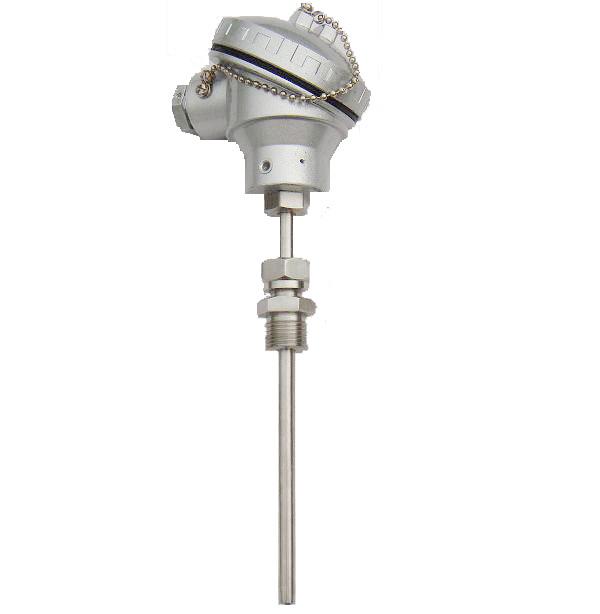Sensors are the main way and means to obtain information in the fields of nature and production. In modern industrial production, especially in the automated production process, various sensors are used to monitor and control various parameters in the production process to make the equipment work in a normal or optimal state, and to make the products reach the best quality. With the development of science and technology, human beings have higher and higher requirements for the accuracy of various measurements, and more and more data to be measured, so a variety of measurement tools and sensors have emerged. With the continuous improvement of the level of science and technology, the application fields of sensors have gradually expanded, and they are currently used in the automotive industry, automated factories, and the Internet of Things.In the early 1980s, China entered the stage of R&D and production of load cells, and it was completely capable of independent R&D and production. From the beginning of the single-point load cell, S-type tension and pressure sensor, spoke load cell, column load cell, etc., some special shape load cells can be customized non-standard. However, both in terms of accuracy and life span of the sensors, they lag behind countries such as Europe and the United States. Even our neighboring country, Japan, is at least 15 years ahead of us in the technology of force sensors. Especially in recent years, some veteran force measurement manufacturers in Europe and the United States have developed a batch of micro/small/small size/small size/small range high-precision load cells such as miniature pressure sensors, small load cells, small size load cells, etc. . This makes my country’s sensors further left behind in terms of technology.According to analysis, the development of my country’s sensor industry is lagging behind, and domestic sensor demand, especially high-end demand, is heavily dependent on imports. There is a huge gap in localization. Currently, sensor imports account for 80% and sensor chip imports account for 90%. The demand for localization is urgent. At present, the products of private enterprises or joint ventures occupy the low-end market. Traditional technology and equipment can meet the manufacturing requirements of most products, and the market is in a good state of development. Except for individual manufacturers that take foreign-produced chips into domestic packaging related products in terms of individual varieties, occupying a large market share, other high-end products are monopolized by foreign manufacturers.With the rise of emerging industries such as the Internet of Things, the industry has become an important field for countries around the world to compete in the development of high-tech. In recent years, my country’s sensor industry has grown rapidly, and the application model has become increasingly mature. However, due to the low level of industry and poor technological innovation capabilities, the domestic sensor industry presents a market pattern of excess low-end and mid-to-high end monopolized by foreign countries. The lagging development of sensor technology has hindered the smooth advancement of domestic strategic emerging industries. The development of state-owned enterprises is in a state of steady growth, and on the whole cannot keep up with the pace of the latest foreign technology development. With the exception of a few manufacturers, the overall gap tends to widen. This is due to the rapid development of sensor technology, rapid update of process and manufacturing equipment, and the inability of many domestic manufacturers to manufacture new equipment. Moreover, the price of a single unit of equipment ranges from several hundred thousand U.S. dollars to several million U.S. dollars. It is difficult for most manufacturers to purchase new equipment based on their own accumulation. As a result, many new technologies and new processes cannot keep up with the rapid development of foreign companies. pace.It is in this context that Sichuan Huikeda realized that it must have its own sensor technology. Through the discussions of the company’s leadership, it was unanimously decided to make up its mind to devote great efforts to research and development of sensor technology, produce its own sensors, and break this dependence. The situation of imports. For this reason, Huikeda spent millions of yuan to purchase advanced sensor manufacturing equipment, formed a group of talented and passionate R&D teams, and recruited a group of experienced production workers, all for the purpose of producing its own sensors. , And smart sensors are the research direction of Huikeda. Various industries are inseparable from the word intelligence, from smart industry, smart agriculture, smart transportation, to smart logistics, smart security and other fields.The demand for intelligence in various fields is essentially the increasing demand for information. Sensors have become one of the important electronic devices that are in urgent need of development, especially smart sensors that can collect, process, analyze, and transmit information.At present, smart sensors are the hotspot and frontier of sensor research in the world. The main bottleneck for the development of domestic sensor industry towards miniaturization and integration is the insufficient capacity of my country’s IC and MEMS technology industrial chain, whether in terms of technical quality, production capacity or production scale. Compared with the international advanced technology, the gap is relatively large. Vigorously carrying out research on smart sensors is a leap-forward development idea adopted by Huikeda, a key measure of the strategy to occupy the commanding heights of information technology in the future, and also the trend of future sensor development.
Post time: 21-09-21
